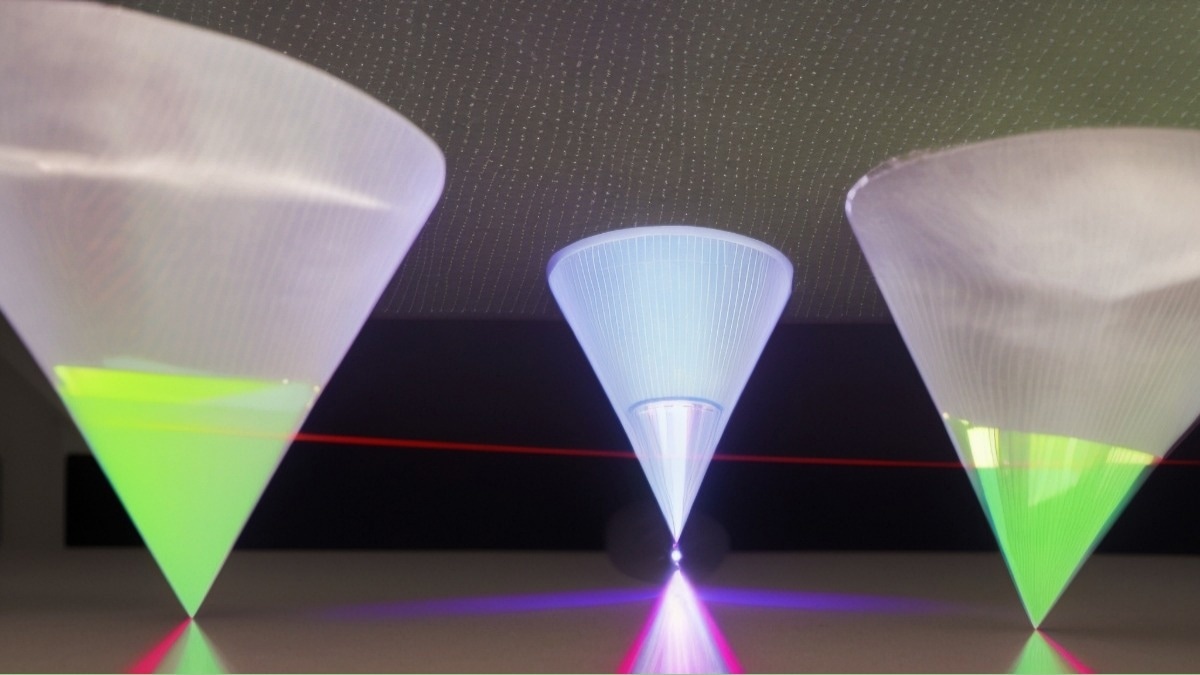In our new interview, AZoOptics talks to Cheng Guo about his new report on Weyl semimetals and how they can be employed by researchers in the field of photonics.
Please can you introduce yourself and your professional background?
I am Cheng Guo, a recent Ph.D. graduate from Stanford University advised by Prof. Shanhui Fan. I work on nanophotonics, thermal energy, and topological materials. Before my Ph.D., I obtained my BS degree in physics from Peking University, China. In my undergraduate research, my teammates and I synthesized the first family of Weyl semimetals.
Can you explain what Weyl Semimetals are?
Weyl semimetals are a new family of topological electronic materials. They can be viewed as 3D analogs of graphene. Graphene is a 2D crystal that features Dirac cones in its band structure; its low-energy electrons obey the relativistic Dirac equation. Similarly, a Weyl semimetal is a 3D crystal that features Weyl cones in its band structure; its low-energy electrons obey the relativistic Weyl equation. Like graphene, Weyl semimetals exhibit many unusual properties that are absent in other materials.
What are some of the unusual properties of Weyl Semimetals and what causes them?
Weyl semimetals possess many unusual electronic, thermal, and optical properties. For example, they exhibit surface Fermi arc states, chiral anomaly, unconventional charge and heat transport, strain-induced axial gauge fields, novel collective modes, unusual magneto-optical conductivity, and so on. These unusual properties are due to the nontrivial topology of their band structure.
What are some of the practical uses of these materials?
Weyl semimetals may enable many potential applications thanks to their unique properties. In optics, for example, they may be used for compact optical isolators and circulators, orbital angular momentum detectors, efficient high harmonic generation, and nonreciprocal thermal emitters among many others.

Image Credit: Cheng Guo
Can you explain why you and your colleagues decided to review the Weyl Semimetal literature?
We decided to write a tutorial review on photonics based on Weyl semimetals because we wish to bridge the knowledge gap between physicists studying the fundamental physics of Weyl semimetals and optical engineers exploring their potential applications.
Why is the time right for such a review?
We feel the time is right because, on the one hand, physicists have made significant advances over the last six years in understanding the fundamental physics of Weyl semimetals. On the other hand, optical engineers have begun to explore the photonic applications of Weyl semimetals. However, there was no pedagogical review on Weyl semimetals for photonic researchers. So we see an emerging need for such a tutorial.
Did you learn anything surprising or unexpected during the course of conducting the review?
Yes, we have also learned a lot while writing the review. The study of applications of Weyl semimetals is at a very early stage and is advancing fast. We became aware of many new and exciting discoveries that came out only recently. For example, in an impressive paper published in Science, Agarwal’s group at the University of Pennsylvania realized the direct detection of orbital angular momentum (OAM) of light using Weyl semimetals, which is important for applications of optical OAM. Works like this have demonstrated unrecognized opportunities for practical applications of Weyl semimetals.
Why are Weyl semimetals so vital to the field of photonics?
Weyl semimetals possess many unusual optical properties that are absent in traditional optical materials. As such, they may enable many new possibilities in photonics. For example, Weyl semimetals can exhibit giant nonreciprocal effects without the need for any external magnetic fields; they may be used to construct ultra-compact optical isolators and circulators that are essential components in optical circuits. As another example, Weyl semimetals exhibit the record-high photogalvanic effect, which can convert light to electricity without the use of conventional p-n junctions. This is of interest for energy harvesting because it can potentially overcome the fundamental efficiency bound of traditional solar cells, known as the Shockley-Queisser limit, which is due to the constraint of detailed balance in a p-n junction.
Can you explain what is left to learn about Weyl Semimetals and how we can go about this?
There are many more discoveries to be made about Weyl semimetals. On the fundamental side, scientists have been discovering more Weyl semimetals (one important instance is the recently discovered magnetic Weyl semimetals), realizing more novel physical effects, and revealing deeper physical concepts. On the application side, engineers are actively exploring the many new possibilities of these new materials in diverse areas. Future discoveries will be made by joint efforts of theorists, experimentalists, and engineers. We feel now is an exciting time for exploration in this direction, and we believe that more exciting applications of Weyl semimetals will come up soon.
What are some of the challenges facing engineers as they attempt to create practical devices with Weyl Semimetals?
Certainly, many efforts need to be undertaken to construct practical devices from Weyl semimetals. Here we list a few challenges: (1) Synthesizing high-quality and large-area Weyl semimetals. (2) Fabricating photonic devices based on Weyl semimetal materials. (3) Designing photonic structures to enhance the light-matter interactions in Weyl semimetals.
How could these challenges be overcome?
Overcoming these challenges requires more joint efforts from scientists and engineers. We need a deeper understanding of the fundamentals and engineering insights into practical applications. We hope our survey will motivate more researchers to explore this emerging topic.
Would the production of Weyl Semimetal devices ever be scalable for the industry?
It may be too early to predict at this stage. But we note that Weyl semimetals are not a single material, but a family of materials. Different Weyl semimetals have completely different chemical compositions and thus different applicability for industrial production. Searching for affordable synthesis and fabrication procedures for Weyl semimetal devices is certainly an important task for practical applications.
Where can readers find more information?
Interested readers may find an extensive list of references at the end of our paper. ( https://elight.springeropen.com/articles/10.1186/s43593-022-00036-w.) For more information on my research about Weyl semimetals and beyond, please visit my website: https://cguo.org/.
More from AZoOptics: The Use of Silicon in Optical Fibers and Optoelectronics
About Cheng Guo
 Cheng Guo received his B.S. degree in Physics from Peking University, and now is a final year Ph.D. student in the Department of Applied Physics at Stanford University. He is studying nanophotonics under the supervision of Prof. Shanhui Fan. His research interests are in photonics and optoelectronics, spanning fundamental research including theoretical photonics and topological materials to applications in imaging, sensing, computing, and energy. He has more than 40 publications (20 first-authored), which have been cited more than 2000 times in total.
Cheng Guo received his B.S. degree in Physics from Peking University, and now is a final year Ph.D. student in the Department of Applied Physics at Stanford University. He is studying nanophotonics under the supervision of Prof. Shanhui Fan. His research interests are in photonics and optoelectronics, spanning fundamental research including theoretical photonics and topological materials to applications in imaging, sensing, computing, and energy. He has more than 40 publications (20 first-authored), which have been cited more than 2000 times in total.
Interview Questions Supported by Robert Lea
Disclaimer: The views expressed here are those of the interviewee and do not necessarily represent the views of AZoM.com Limited (T/A) AZoNetwork, the owner and operator of this website. This disclaimer forms part of the Terms and Conditions of use of this website.